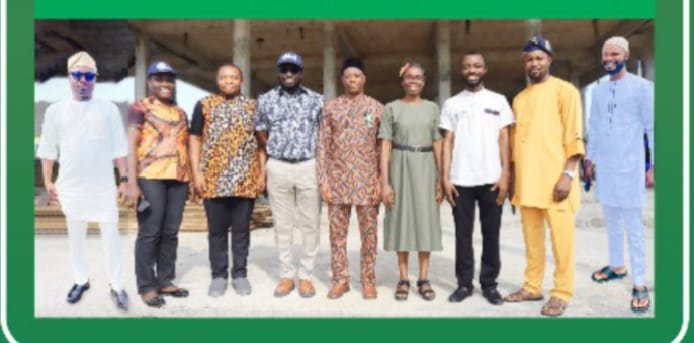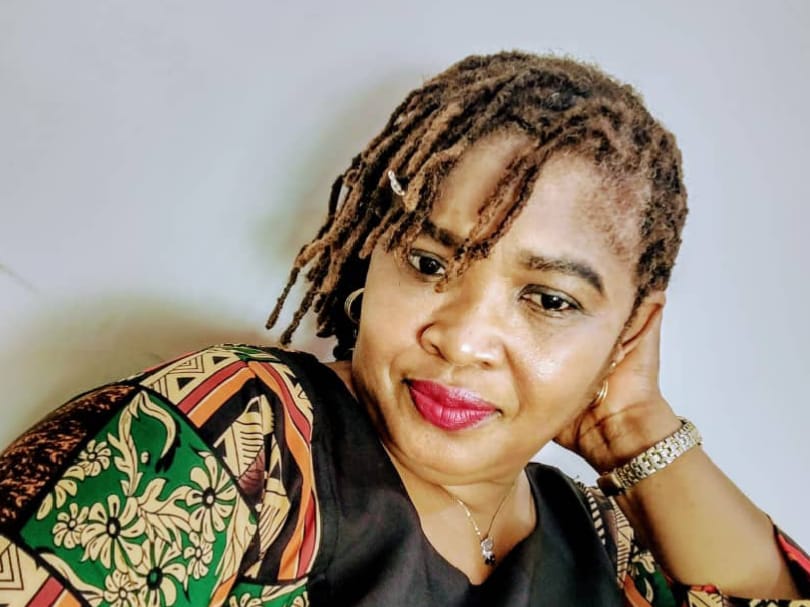As the scorching heatwave continues to grip many parts of the country, the arrival of April offers a glimmer of hope. Citizens eagerly anticipate the rains, expected to bring much-needed relief from the oppressive heat, yet another visible sign of climate change.
However, for residents of Ayetoro, a coastal community in Ilaje Local Government, Ondo State, April brings not relief but renewed anxiety. For them, it marks the beginning of a dreaded season, one defined by fear, uncertainty, and despair, as rising sea levels trigger the annual cycle of sea incursion that has plagued the community for years.
Ayetoro has long been in the spotlight as a symbol of climate vulnerability and government neglect. For decades, the community has suffered the twin crises of climate change and infrastructural deficit.
In 2020, Premium Times published an in-depth report highlighting the devastation caused by persistent sea incursions. Since then, several civil society organisations and media outlets have continued to raise awareness and advocate for urgent action.
Yet, five years later, meaningful intervention remains elusive. Despite the outcry, the situation on the ground has hardly improved, as noted by the community’s traditional ruler and spiritual leader, His Royal Highness, Oba Oluwambe Ojagbohunmi (JP), the Ogeloyinbo of Ayetoro community. As the high-risk period approaches once again, the monarch shared his deep concerns in a recent interview with Premium Times, shedding light on the continuing turmoil facing his people.
Excerpt:
PT: While climate change is undoubtedly a contributing factor to the current crisis in Ayetoro, we recognise that the root cause of the problem lies in the lack of proper infrastructure. Despite the federal government allocating funds for shoreline protection, the contractor has failed to deliver, and the community continues to suffer. We believe that the contractors’ neglect has caused more harm than the effects of climate change. I’m checking in with you now to ask: how is Ayetoro doing? How have things been since our last publication?
Ojagbohunmi: Thank you. Between 2020 and March 2025, the soil erosion and sea incursions that have been happening in Ayetoro for the past 15 years continue unabated. And there has not been any tangible respite coming from the government and its agencies. Between 2020 and now 2025, Ayetoro has lost another 170 buildings. And these buildings are people’s homes, they are people’s shops and also some small industries remaining that we inherited from our fathers. The main street as of 2020 was half damaged was eroded. We could still move around because the main street is the unifying street that connects all the other 45 streets of the community. There are 45 streets in the community now. The main street is 80 per cent gone. The only place remaining is the ancestral palace that was built in 1960.
It is from that palace to just about 150 meters that is left of the original broad street. The rest are all wiped out into the sea. People have relocated. Some people have relocated more than three times. After the sea destroyed their homes, they tried to salvage the little things they could get. They lost a house of 10 rooms and built a smaller one with five rooms. The flood usually comes at night and the waves will be so high, as high as six feet below sea level. We know when it wants to strike, and we know the months that are critical. But we do not have accurate weather reports or sea reports as to know the date or the week. So we only prepare a long time preparation that once it is the month of February, April, August and September, we try to encourage and advise women and children who are close to the sea in those vulnerable places to try and look for places to stay for that period. We have our local emergency team that always rushes to the scene when it is happening. But their effort is like a drop in the ocean because if 30 houses are being destroyed in the middle of the night, how many can you save? So our efforts have been in the area of saving lives first.
So, the sea encroachment continues unabated. Promises by the government at various levels continue, and we are not tired. We continue to cry, we continue to speak to the media, and we continue to write on social media. Last year we had a series of peaceful demonstrations in conjunction with Corporate Accountability and Public Participation Africa. They came down to Ayetoro. We had people come out in thousands to demonstrate and vent our pain and our suffering under the hashtag of “Save Ayetoro Now” and I, specifically, led the demonstration. I was in the sun all day, marching around and singing. We mandated all our people who had Android phones to post on their walls and to share to the government at all levels.
So, between 2020 and 2025, we are still facing sea incursions, and the sea is still hitting places. We are at the last stage of our patience now because we have been shifting northwards away from the sea. Now, we do not have land where we can shift to if what happened the last two years should happen this year. Last year, April was very devastating. I was crying in my room. There was nothing. I was helpless. I was just looking through the window of my room, seeing women and children shouting in the middle of the night, carrying a few things they could carry. Another April is here. We don’t know what will happen because it was worse last year.
What we observed is that the sea level continues to rise higher and higher because we have our local way of marking it using our building. Like when it came last year, we marked it that this is where it got to. Every year, it increases, and the oil exploration continues unabated. There are about four oil companies taking oil from the shores of Aiyetoro. We can see them and their gas flaring in the evening. These companies are Cavendish, Agip Nigeria Limited, Chevron and Consolidated Oil.
There is no relationship connection, or social responsibility from these four oil companies to the Ayetoro community. None of them can point to any project or workshop or health awareness or health benefit or whatever that they have done for the community. Everything the community had was built by our local fishermen fathers. In its heyday, it had the highest per capita income of all towns in Africa. It is a small town of about 15,000 people and has over 50 industries, so much so that nobody went out to look for jobs. People were coming from other places to learn and to seek jobs here. And the community could feed everybody three square meals without having to look for help or look for anybody.
This is the only time we need government help. We voted despite operating a community of communism, and the community was paying tax in bulk because as a closed system, the government could know the number of people that were there. There is no agency or arm of government of this Federal Republic of Nigeria that is not aware of our crisis.
Thanks to the advocacy of NGOs and the effort of the journalists. They have all reported this on various media and the government at all of these levels had come to inspect to see for themselves. They all saw the devastation and consoled and told us that efforts to do embankment or to restore the land are in the pipeline.
The government usually visits us in large numbers at different capacities. Starting from the local government, the chairman and the executive, the House of Assembly committee on environment and other relevant committees on ecology and all that. We have had the visit of Deputy Governors, Niger Delta Develpment Commission (NDDC), National Emergency Management Agency (NEMA), Federal Ministry of Environment, we have had more than three or four different Committees of Senate that are related to natural disasters, climate change and ecology. They have all visited.
Let me not fail to say that contracts were awarded. The first one was in 2003 which shows that Ayetoro is more than 20 years old. The contract was awarded in 2003 to Gallet Nigeria Limited at the cost of 1.6 billion. Till now, we don’t know who Gallet is. We don’t know who owns it. And we did not see their visit or any sign of them. So when we didn’t see anything, we went back to our drawing board. We continued to agitate and to write petitions and to write articles. Six years later, by this time, it was only the land, our coastal land, that was being taken away. Then, we saw it coming because we’re measuring the rate at which it was taking this one. Now we knew that with time, it would get to the residential area again.
The first contract was awarded by NDDC, which was the same year NDDC was created. It was among the first things that NDDC did when they came on board during Obasanjo’s administration in 2009.
Again, the same NDDC re-awarded the contract: Ayetoro Embankment project to Dredging Atlantic at the cost of N6.5 billion. The contractors sent engineers, they did soil test analysis and they said the design given to them by NDDC was for them to sandfill, to reclaim what has been lost. They said they were looking for sand. We told them that the whole of this area is mud. That’s why the sea is so violent, and that’s why it’s so easy for it to pack them away, that before they can get sand they will have to travel close to 40km towards Lagos, but within the same local government. They said they did not have the equipment to go that far. Eventually, they said they saw sand in the neighboring community, and they laid their pipes there. We were all thanking God, believing that the solution had come.
After a few days of collecting sand, they said the sand had finished. The sand was not even enough to push the sea. They were still trying to gather it at the seashore, it was just a few square meters of sand that was about 8ft high, 10 meters square. That was the beginning of the problem for the project.
At one time, they said if sand would not work, since they couldn’t get it, they will use a system that they call a geotube. A Geotube is like a wave breaker that they will put along the seashore so that instead of the wave slamming against the mud and packing it like a floater, they pump air into a tube like the tire of a motor, but not so strong. So when they brought the thing, they said it’s from Holland. We told them, based on our local knowledge, because we had made a series of efforts, to try to use local technology to stop the wave. We have built different kinds of walls and defenses. The waves always pulled them down. We told them it would not work. They said they are the expert, and that’s what they wanted to use. At the end of the day, it was within a week that they laid the tube. They didn’t lay it to the earth. And for the whole length of the community it was just about 300 metres or 200 metres of the tube that they laid. Within a week the sea had broken them into pieces and pushed the whole thing on shore. So that was it. The contractor had to leave, and they left some equipment there for many years before they came to carry everything. This was the second time and the contractor said there was a design format NDDC gave them.
If they had not insisted on sand as what they should use, they probably would have pumped mud, which was readily available. So it was back and forth between NDDC and the contractor. After some time, we didn’t hear anything. Here we are, many years after, and between 2009 till date, there has not been any tangible effort. Recently, we had a new governor who was sworn in February and comes from our local government. He has promised, and he has even sworn that the job will be done. So that’s the place we are now and we are hoping and praying, and we are always monitoring and sending delegates to constantly remind him of his promise. He has told us that the state does not have the resources to do it again, that they will have to do some kind of cooperation or collaboration with the federal government or its agency in this regard.
PT: I think that brings a bit of relief. And like you said, we do hope that this time around, too, it doesn’t go the other way other promises have gone. While we wait for this, April is just here. What’s the hope for the people? What are the plans or the next step?
Ojagbohunmi: I sincerely do not know what I can do to stop April from happening because April has come to be the worst of such attacks. When it is happening, it is like war. It is like the community is under siege, and we are at war. It’s usually very serious when it’s happening. So we don’t know what we can do. We can only hope and pray and get ready to save our women and children. We always make sure we save our people, save their lives. Then one other thing, we also try and do a lot of defending fathers and mothers who labored to build that place. We realised that since this devastation started, at the level it demolishes their houses, many of them are just dying. And we’ve come to realise that they are depressed.
As a community leader, I engage with the health practitioners first. I bring in doctors from our side in collaboration with the nurses. We have free health checkups. Give them drugs. Three sicknesses have become prevalent in the community. Number one is BP. High blood pressure is so serious, and I can understand. Somebody who has lost his home, who has become a refugee in his or her own life. Why would they not be thinking? The second one is ulcer. Almost everybody has one. I don’t know why it’s so prevalent. Maybe it’s due to all of this pressure, too. The third one is arthritis. Maybe it’s because we are too close to the sea, Once sea level rises, the whole community is hot because the sea water is very warm, very, very warm..
PT: I know you have said a lot of things, and we can only hope for better days because it’s been a long time coming for Aiyetoto. In all of these, is the community considering relocation should the effort to secure support fails?
Ojagbohunmi: This question has been asked by a lot of concerned people. I have been asked directly, but the government has not made such a proposal to us. They have been promising us that it will be done. As a leader, I will not consider a relocation. The ***(sic) can force us to relocate but I would rather wait for that to happen than be the one advocating for relocation. The reason is that we see the land as a promised land. We see it’s not just a place where we sleep and eat. There is a specific instruction and there are specific reasons why our fathers came there. This was because of what they stood for. They were preaching against all kinds of idolatry, fetish things. Then majorly it was mainly against the killing of twins. The killing of twins did not stop in Ilaje and its environs in the ‘40s. It has stopped in other parts of Nigeria through the effort of that message. The campaign did not get to our side because our side is a bit far from the rest. So this was the mandate and the inspiration that formed the apostolic movement that established Aiyetoro. About three people from different places. One was a cherubim and seraphim member. One was a Jehovah’s Witness. Another one was the son of a herbalist. Within the same year, they had the revelation that God was calling them to start preaching against the killing of twins.
So they started in their various communities and it was a tug of war. Somehow people started comparing what they were saying and they were able to connect to each other. And they now formed a Christian movement. So many of them, as they were expanding in number, people felt that this new religion, strange religion, that’s what they call it, was a threat to the traditional religion that they were practicing because they see twins as abominations. So if you are a mother, if you are a pregnant woman, you will be praying, your husband will be praying with you that you should not have twins.
Eventually, the land became successful, and it became a safe haven for people that are persecuted or people who are labeled. So now, after 78 years, how do we go back to our origin? Our way of life is even different. Very, very different. People within the same tribe in the community will tell you they are different.
PT: What are your final thoughts?
Ojagbohunmi: This community is our home. It’s a place of refuge for the persecuted and the oppressed. It has given birth to so many other Christian communities in Nigeria, in Africa. Yes. It is the first religious settlement before Canaan Land, ‘Redeem’ and so many others in our area. It’s a reference point for so much research on communal living and unique ways of life. We should not be allowed to go extinct. We must preserve this legacy. The technology of sea embankment is not rocket science. It’s been done in many places. In Rivers and Balyesa states and recently it’s been done in Eko Atlantic. Save Aiyetoro Now!
Support PREMIUM TIMES’ journalism of integrity and credibility
At Premium Times, we firmly believe in the importance of high-quality journalism. Recognizing that not everyone can afford costly news subscriptions, we are dedicated to delivering meticulously researched, fact-checked news that remains freely accessible to all.
Whether you turn to Premium Times for daily updates, in-depth investigations into pressing national issues, or entertaining trending stories, we value your readership.
It’s essential to acknowledge that news production incurs expenses, and we take pride in never placing our stories behind a prohibitive paywall.
Would you consider supporting us with a modest contribution on a monthly basis to help maintain our commitment to free, accessible news?
Make Contribution
TEXT AD: Call Willie – +2348098788999
© Premium Times








